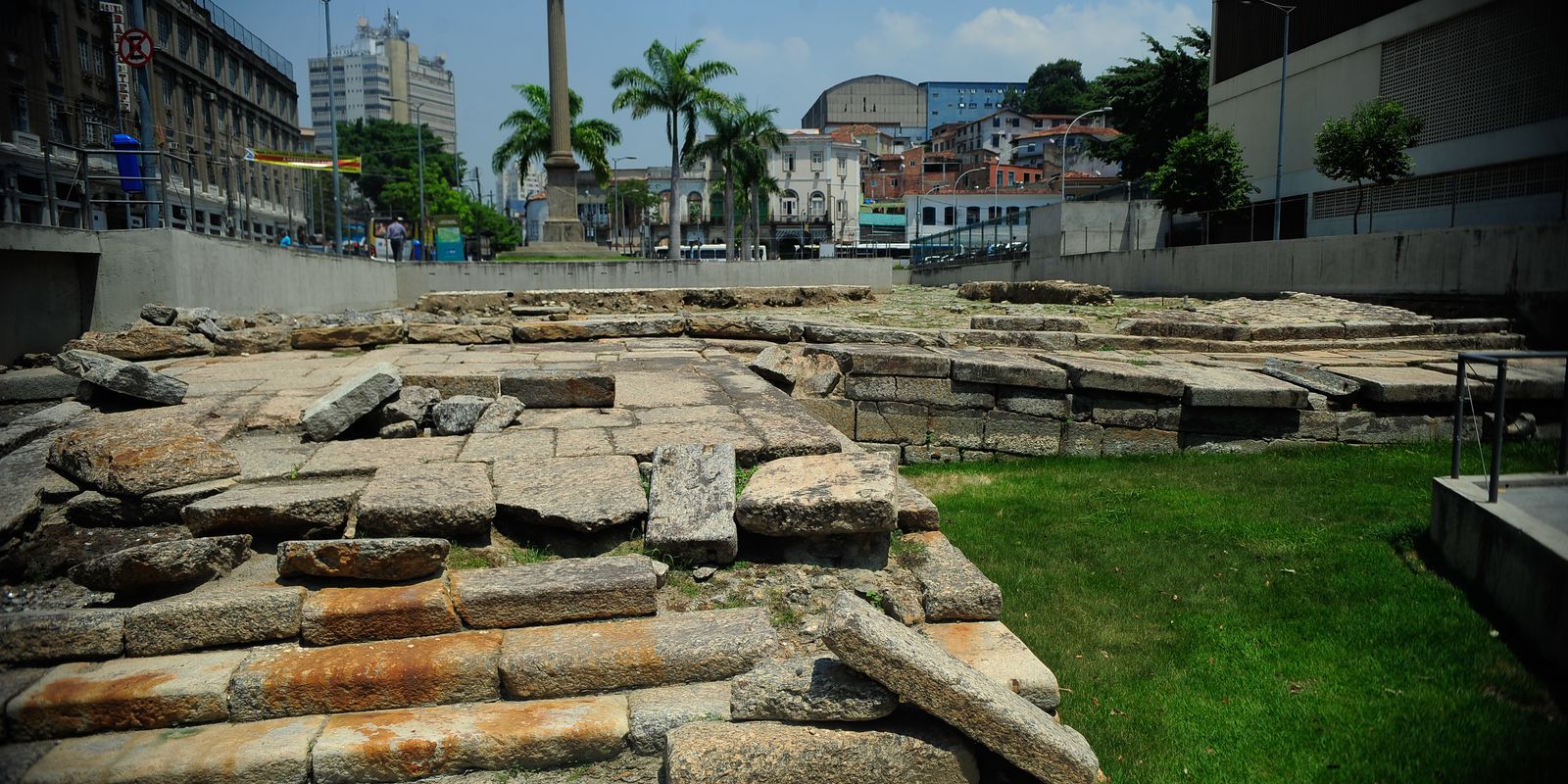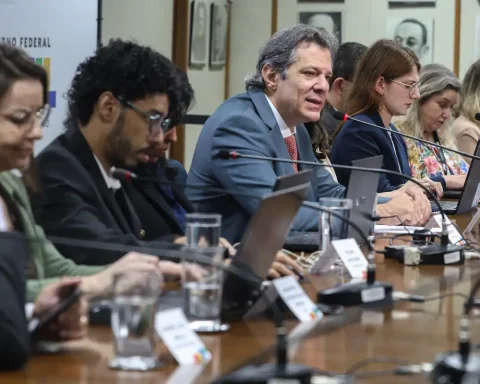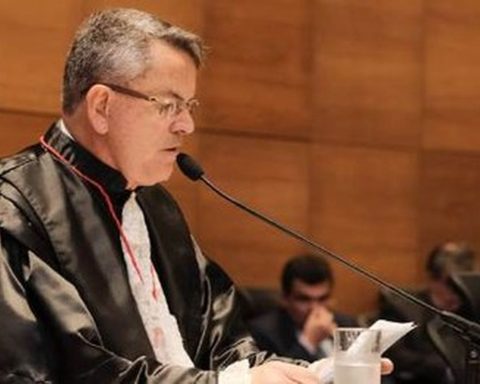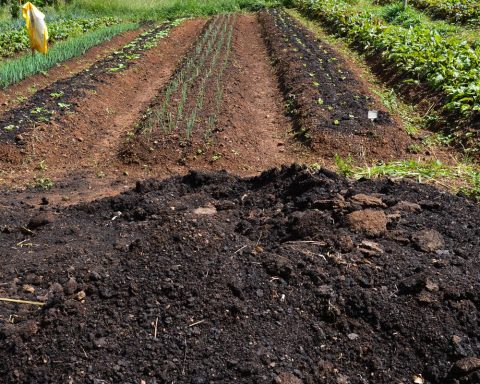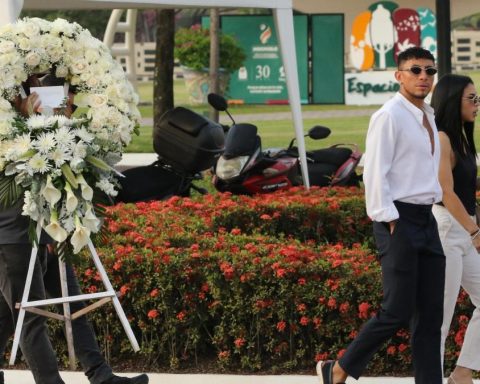The Instituto do Patrimônio Histórico e Artístico Nacional (Iphan) intends to resume the recovery work at Cais do Valongo, in Rio de Janeiro (RJ), a place that holds the title of World Heritage approved by the United Nations Organization for Education, Science and Culture (UNESCO). The institute presented a series of proposals for the preservation and enhancement of the archaeological site and one of the priorities, according to a note sent to the Brazil Agencyis to re-establish the Participative Management Committee of the Cais do Valongo Archaeological Site, which was extinguished in 2019. 
“The objective is to map new actors and design the operational structure, aiming at greater representativeness and guaranteeing listening processes and dialogue with civil society. The recreation of the committee is a commitment signed by Brazil before Unesco. Although officially the committee has not yet been reinstated, the new Collegiate Board of IPHAN has already started negotiations to resume its activities”, says the note.
Another measure proposed by Iphan is the implementation of the Reference Center for the Celebration of African Heritage, in the Pedro II Docks building. The project aims to undertake the creation of a tourist reception center and space for reflection on the importance of the legacy of people of African descent in the culture of the Americas.
To conclude this proposal, Iphan considers the partnerships with the Palmares Cultural Foundation and the National Bank for Economic and Social Development (BNDES) to be fundamental. Earlier this week, the bank’s new president, Aloizio Mercadante, announced that he would support the construction of a museum on the history of slavery on the site. The initial project also included installation in the Open Laboratory of Urban Archeology (LAAU) building, which houses around 1.3 million archaeological pieces rescued during the port area revitalization works. The pieces are under the custody of the city hall, but the building requires works by the Palmares Foundation for the center to be implemented, the pieces cataloged and exposed.
Valongo Wharf
On March 10th, it will be 6 years since Cais do Valongo, in the port region of Rio de Janeiro, had the inscription report approved by Unesco for the category of World Heritage. The title was made official on July 9 of the same year. But the international recognition of the archaeological site, considered the main port of entry for enslaved Africans in Brazil and the Americas, was not enough to sensitize the public authorities in the following years. The site today needs revitalization, conservation and signaling works.
If the situation does not change, there is a risk that Cais do Valongo will lose the title it obtained in 2017. At the time, the federal government assumed a series of commitments with Unesco to preserve the cultural property and its surroundings in up to three years: in addition to Structural improvements included exposing the collection found at the site in a memorial and creating a Management Committee, with the participation of civil society.
“The submission of the candidacy of the archeological site of Cais do Valongo to World Heritage status was the most important gesture made by the Brazilian State to recognize its debt with the African peoples and to value the African matrix of the population”, said anthropologist Milton Guran, a those responsible for the dossier delivered to Unesco, highlighting the historic importance of the act.
Guran understands that the abandonment of the region, especially in the last four years, was part of a well-defined political project. “It wasn’t just the abandoned one. The pier was deliberately sabotaged in its transforming power of valuing the African matrix. It was intentional, completely planned, state policy. It is explicit in the speech of the previous federal government”.
Good news for Cultural Heritage!? The @iphangovbr is preparing inter-institutional actions for better preservation and use of Cais do Valongo. Follow the thread ✨
?Oscar Liberal pic.twitter.com/Fo0ZotvVkT
— Iphan (@IphanGovBr) February 10, 2023
Complaints
The Federal Public Prosecutor’s Office (MPF) began to act in the case to press for compliance with the actions agreed with Unesco. Public hearings were held annually to discuss the matter. The next step was to file lawsuits. Two of them are still in progress and focus on two spaces: the Cais do Valongo archaeological site and the Docas Pedro II/André Rebouças building.
The first is under the responsibility of IPHAN. In the process started in 2021, the MPF asks for the installation and operation of the Management Committee of the Archaeological Site of Cais do Valongo and the elaboration of the management plan for the site, extinct by presidential decree in 2019.
The Pedro II/André Rebouças Docks was under the administration of the NGO Ação da Cidadania until 2018. That year, the MPF filed a lawsuit asking for the repossession of the building by the Union. The justification was that it was being illegally rented by the NGO for parties and filming, with the sponsorship of commercial brands. The court accepted the complaint.
Temporary custody of the building passed to the Palmares Cultural Foundation in August 2021. The definitive use contract was signed in November 2022. In the process opened in 2018 by the MPF, there is also a request to install the Interpretation Center do Cais do Valongo, a space that gathers educational and tourist information about the history of the former slave port.
Changes
With the changes in command of the two institutions linked to the Ministry of Culture, new conversations were initiated to try to solve the problems. Last week, representatives of the MPF met with the president of Iphan, Leandro Grass, to resume recovery and renovation actions at Cais do Valongo. Federal prosecutor Sergio Gardenghi Suiama, who has followed the case since the beginning, evaluated the meeting as positive.
“We managed to dialogue with Iphan, in fact, for the first time in four years. At the meeting, we were able to discuss the problems and urgencies related to Cais do Valongo. Now, it is necessary to go beyond good intentions and get the renovation and structuring projects of the place off the drawing board”, said the attorney.
The Palmares Foundation informed that it is going through a transition process, with an interim board. The appointment of the new president, João Jorge Rodrigues, is expected in the coming days. Regarding the use of the Docas Pedro II property, the foundation says that it is in the process of negotiations with all those involved, such as Iphan, the city of Rio and the Federal Public Prosecutor’s Office. Regarding the actions of the MPF, Palmares states that it respects the determinations of Justice and that there are several administrative processes in progress in the internal scope.
History
Cais do Valongo was built in 1811 to receive enslaved Africans, who entered Brazil through the port of Rio de Janeiro. Historians estimate that 1 million Africans may have disembarked there by 1831, a period in which transatlantic human trafficking was officially prohibited.
Historically, one can speak of successive attempts to erase this memory. The first, of a direct nature, with urban interventions that buried the place. In 1843, the stone pier gave way to a new landing place, planned to receive the Neapolitan princess Tereza Cristina de Bourbon, wife of Emperor Dom Pedro II. In 1911, during the republican period, renovations added a new level of paving to house Praça Jornal do Commercio.
The rediscovery of Cais do Valongo took place in 2011, during the Porto Maravilha project, developed by the City of Rio to revitalize the region. Between 2013 and 2014, the candidacy dossier of the archaeological site for World Heritage of Humanity was prepared. Recognition came in 2017, with the confirmation of the title by the United Nations Educational, Scientific and Cultural Organization (Unesco). The Pier has been described as “the most important physical evidence associated with the historical arrival of enslaved Africans on the American continent”.
